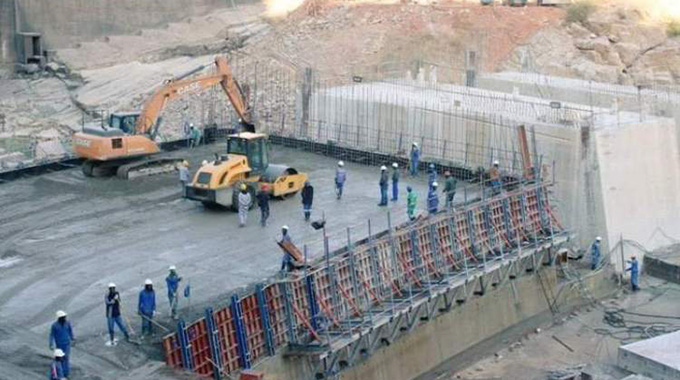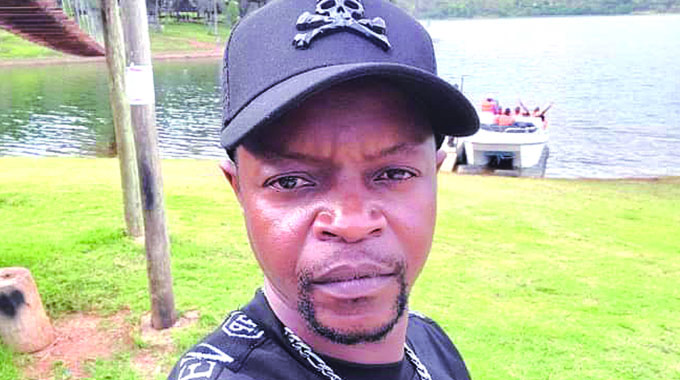Editorial Comment: Pipeline deal flows in right direction

The progress on converting a century old idea, and a century of talk, into a decent water supply for Bulawayo is moving forward rapidly, with work progressing well on the Gwayi-Shangani Dam, which is already filling, and now the contract signed for the supply of the 252km of pipes for the pipeline.
This is now fairly typical of the Second Republic, ending talk about needed infrastructure and instead doing something serious about putting it in place, converting the words of decades into action.
Bulawayo’s water woes have been long-lasting and have stymied economic growth in the city and in the entire western part of Zimbabwe as a result.
The city is well sited, far better planned than most Zimbabwean cities and has, unusually for a Zimbabwean urban area, a first class team of professional staff on the payroll and at their desks instead of on bail awaiting trial. What it has needed to grow is water. While work on the Gwayi-Shangani Dam was delayed because of Covid-19 it is moving along now, and it does take time to create such a large lake.
Now the other half of the programme is ready to start with the US$50 million deal with a South African company to supply the most suitable pipes for the pipeline.
It is fairly obvious that these will not be the steel pipes that have caused problems as they rust and bend in other water schemes, but rather something more rigid that will last longer, and if damaged are easy to repair by bringing in a spare pipe and replacing the damaged pipe.
One interesting part of the deal is that while 52 percent of the required pipes will be imported as finished products from South Africa, to get the pipe-laying moving at the earliest possible moment, the rest will be made in Zimbabwe as the supplier sets up a plant in this country.
This benefits both the country, with a new industry and a growing component of local materials going into infrastructure while costs are reduced, but also the South African company.
The sort of energy seen in water supplies under the Second Republic means that there is, and will be a lot more, demand for decent pipelines, starting with that one from the Kunzvi Dam north of Harare, now well on its way to the wall building, to the very dry northern and eastern suburbs of Harare.
Other large dams for both urban water supplies and for irrigation are coming into use, and so pipelines will be needed, and having these made locally will obviously be attractive. Technology transfer is always useful.
There will be some who wonder why the pipe factory cannot supply the lot, but that was answered at the signing ceremony between Zinwa and Flowtite; we need to start laying pipes quickly and delaying this while we build the factory is not a good idea.
Several of our larger dams have been designed and built by foreign contractors, although most of the labour has been Zimbabwean. This has been necessary, but we hope that our own skills base is now growing fast. We have civil engineers, although there is that gap between qualifying and gaining the required experience. Presumably some are now gaining that experience.
This is important. In the mining world for example global investors are dominant, but when you look at the staff lists the names from chief executive down are almost all very familiar Zimbabwean names, and some of these investors have been known to offer Zimbabweans good posts in other countries as they tap into our pool of professional and technical staff.
And when we talk about how the rebuild and upgrade of the Harare-Beitbridge Highway is being done by six Zimbabwean contractors we need to remember that some of those won their spurs on the foreign managed Mutare-Plumtree Highway upgrade.
So on the Bulawayo pipeline the contract is about right. Use the foreign supplies to get started, but meanwhile train the Zimbabweans, and we are trainable, and work out ways to speed up production by having manufacturing done in Zimbabwe.
One major problem for many Zimbabwean engineering and construction companies has been the stop-go-stop pattern of development in the couple of decades before the Second Republic, which made it extremely difficult and sometime impossible to retain the core staff and fund the core equipment needed.
All businesses need to be in business, that is moving from one project to another in these fields and perhaps as we build up the teams for Zimbabwe some of our construction and engineering companies can be looking at bidding on contract in other countries, being able to show potential customers just exactly what they have done so everyone knows that they are not just competent but also experienced.
But all of this requires what we now, at long last, do have: an economic environment that does offer continuous work and a Government keen on moving from talk to action and from stop-go-stop to go-go-go.
One huge advantage in having national development strategies is that the private sector can see what is going to happen and plan accordingly, with the proviso of course that these plans are being implemented rather than being a discussion topic to think about.
Now that the Second Republic has made it clear that converting talk to action is the priority, we are creating openings for Zimbabwean firms and their professional and technical staff to do ever more.









Comments